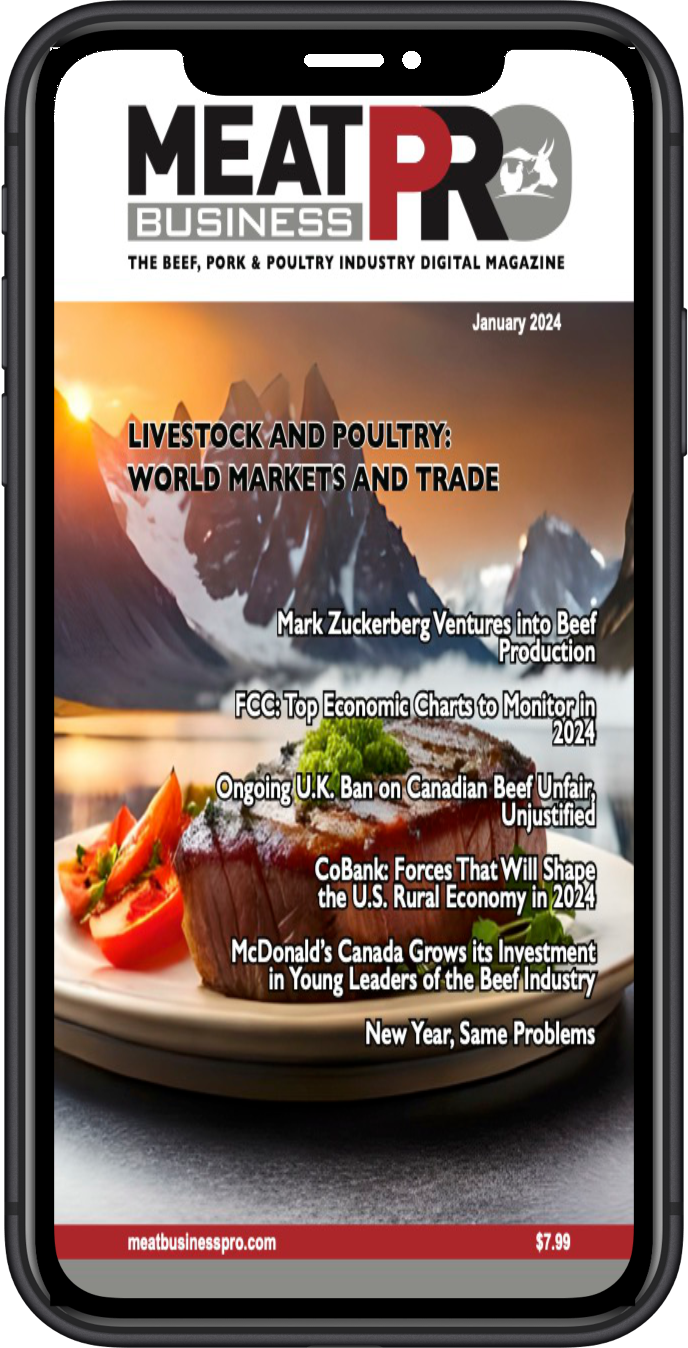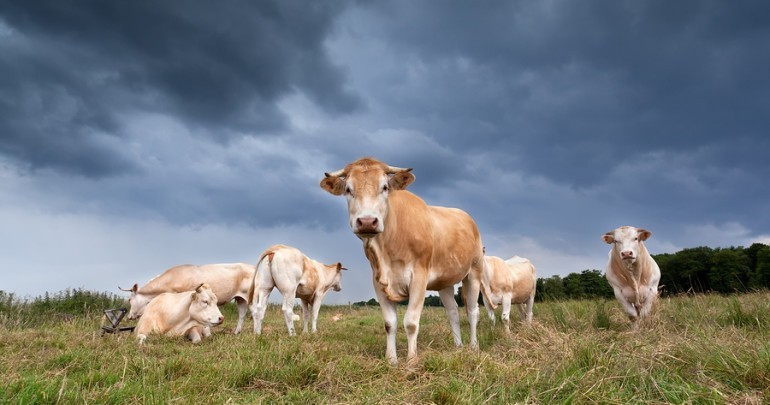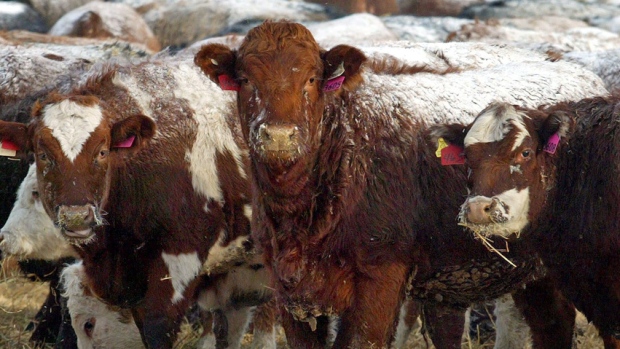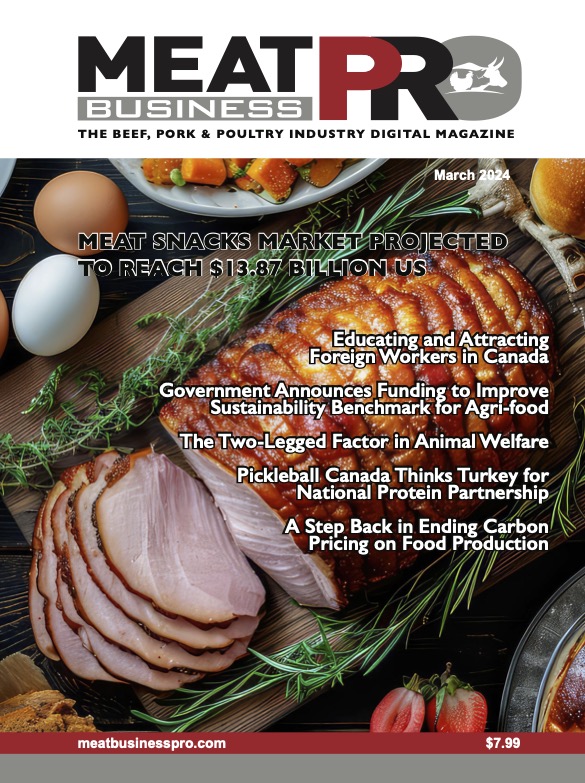The Effect of Climate Change on the Canadian Meat Industry
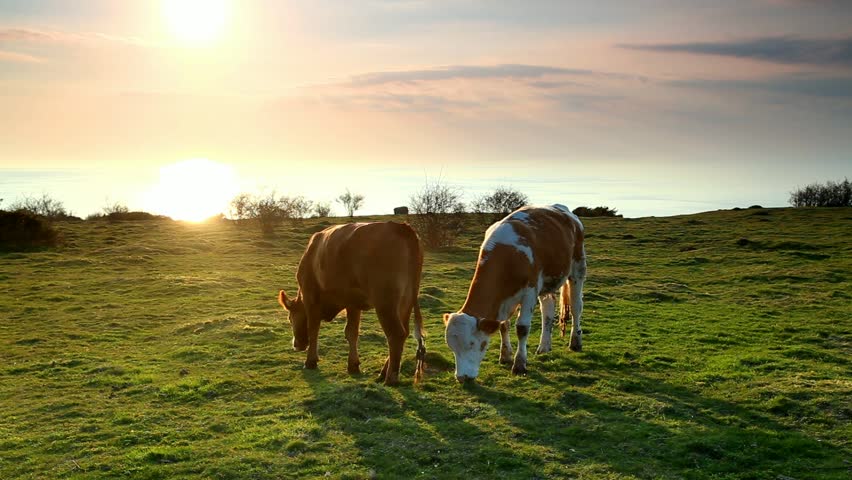
For many years, the general manager of Manitoba Beef didn’t see a lot of feed corn growing in this province, but things have changed in recent years
a Canadian Meat Business exclusive by Scott Taylor
When Brian Lemon looks across a field in Southern Manitoba these days, he sees corn. He will admit that he’s not sure whether its Climate Change, a cyclical altering of the seasons or a combination of both, but he does know things are different.
And if the reason happens to be Climate Change, he can see a changing Manitoba beef industry over the next 30-100 years.
“Climate Change will offer different opportunities and a number of challenges,” Lemon said, speaking on his hands-free car phone as he drove across Southern Manitoba in late June.
“For instance, 15 years ago, there wasn’t much corn in Southern Manitoba. But as the growing seasons gets longer, and it has become longer in the last few years, corn has now become a major part of our feeding strategy.
“With seasons changing, we can now rely on a longer growing season and grow more and much better feed corn,” Lemon continued. “This offers up all kinds of different feeding strategies and options for our producers.”
“Improvements in production efficiencies, growth-promoting technologies, and cattle genomics as well as improvements in field crop yields are all good signs for the sustainability of the sector”
The Earth’s climate is changing on a constant basis as a result of natural processes. However, 97 per cent of the scientists (almost every scientist who isn’t paid by the fossil fuels industry) who study this topic and the Intergovernmental Panel on Climate Change point out that the current rate of climate change appears to be happening faster than at any time in the last 10,000 years.
The definition of Climate Change is now pretty much in our daily lexicon: “Greenhouse gases (GHG) in the atmosphere act as a thermostat controlling the earth’s climate. Concentrations of GHGs have been increasing steadily and this has been linked to human activities including industrialization and release of natural carbon sinks by cultivation and deforestation.”
When it comes to a high-latitude country like Canada, scientists suggest that the warming is expected to be more pronounced than the global average. Over the next 30-50 years, the North, along with the Southern and Central Prairies will probably experience more warming than other regions in North America. We’re actually experiencing it now.
This change in climate (not weather, climate) is expected to have substantial impacts on all aspects of the environment. Regional climate changes, particularly temperature increases, seem to be affecting natural systems on all continents as well as in the oceans. However, it should be noted that scientists have long predicted that Climate Change is increasing the frequency of extreme weather and Lemon has even noticed it in recent years, affecting the way cattle are raised in Manitoba.
“As Climate Change creates a variability in the seasons, we’ve seen an increased amount of rain in this area,” said Lemon, who works daily with farmers and ranchers in the third largest beef-producing province in Canada.
“Its Climate Change issues like that which create challenges. We’re in the midst of an extremely wet cycle. In the last few years, we’ve had more severe rain. Is it something that’s just cyclical or is it Climate Change and will it be with us for a long time? Regardless, all this rain causes issues in regards to water damage and flooding.”
Agriculture and Agri-Food Canada (AAFC) scientists predicted in 2004 that under a future climate, on average, high temperatures would increase by 2ºC to 3ºC and low temperatures increase by about 3ºC. When compared to the current climate, the model also predicted that precipitation was to increase by three to seven per cent.
However, one of the concerns is that climate change could have significant negative impacts in terms of violent weather patterns. That would include the increased intensity and frequency of droughts and intensely damaging storms.
According to the AAFC: “As the frequency of events like droughts increases under climate change, crop yields would decrease. This would increase the vulnerability of producers to climate change, particularly in semi-arid regions of Canada. Extreme events like the 2001 and 2002 droughts and floods of 2010 and 2011 can have a devastating impact on crop yields where yields could be reduced by as much as 50 per cent of the average yields during normal or more suitable growing conditions. That would increase feed costs for meat producers.”
“It used to be that we’d get rain in late April and early May and the producers could get their cattle out into a nice green pasture by mid-May,” Lemon explained. “They could calve in the spring and get the cattle out to pasture in the spring. Now, we’re getting heavy rain in June. We’re playing with the seasons. We can graze until November, but it in the spring we’re getting a deluge of June rain. Naturally, this will create both problems and opportunities.”
Dr. Kim Ominski, an associate professor in the department of animal sciences at the University of Manitoba, indicated that some producers in Alberta are working to extend their grazing seasons to 12 months a year. With warner weather and an increase in precipitation, it’s not out of the question.
For most experts in the meat industry, there is a growing confidence that Canada could fare well if global temperatures continue to rise. In fact, as Lemon pointed out, there could be a reduced demand for feed, a longer (but different) grazing season and much higher forage. As well, there is a good chance there will increased survival rates in calving and even lower energy costs.
But Lemon was more concerned about the challenges than the opportunities and believes producers must be prepared for some difficult changes, as well.
There will, obviously, be more extreme weather and changes to weather patterns; bigger, uglier and more deadly pests; and even transportation and shipping problems.
“We know the future of our industry will include change,” said Dr. Ominski during a recent Beef Cattle Research Council webinar.
“Scientists are looking at a number of possible shifts. Warmer winters mean cattle don’t need as much feed to maintain body weight, so producers would see lower feed bills. Many have already stopped confinement over the winter and moved to extended grazing.
“Higher temperatures could also result in a longer growing season and higher forage yields. But more spells above 0 C during the winter mean more crusted snow that makes it more difficult for cattle to get at swaths or other stockpiled feed.”
Changes in weather patterns could, and probably will, mean a number of things are going to change dramatically. According to Dr. Ominski, more intense summer heat waves, which will increase water consumption and the risk of heat stress and stroke, will have to be dealt with as will quick warm snaps in the dead of winter.

“Climate change can impact transportation as greater variability in temperature and precipitation can cause frequent freeze-thaw cycles and cause deterioration in road infrastructure,” said Dr. Ominski during her webinar.
“Extreme weather with road closures could cause costly interruptions in transport. In Western Canada, there has been a trend to warmer temperatures in winter, along with less snowfall. Over a 50-year time frame, the date of the last spring frost has varied from May 1 until the middle of June — a six-week difference.”
Dr. Ominski agreed with Lemon when it came to the issue of precipitation.
“In addition to the variability we see in spring frost, we also see high variability in precipitation,” Dr. Ominski said. “If we look at climate trends across the Prairies, we can say that production is limited by heat and by water. We see small increases in frost-free periods and heat units, but there is high year-to-year variability, which masks a very obvious trend.
“By 2050, temperatures will have increased between 1 C and 4 C, with the extra heat units increasing the length of the growing season and extending the range of crops toward the north. But that also means more evapotranspiration in plants in a landscape susceptible to drought. We have to think about opportunities to capture run-off, and then store and use water for periods of deficit.”
Because of this obvious change in weather over the last 50 years, there is also a concern for the health of the nation’s pastures.
“Pasture health and animal health will definitely be a challenge,” said Lemon. “We are already seeing species of weeds that used to grow only in the north, invade pastures in the southern parts of the country. These weeds are finding their way into our pastures and so we have new enemies that must be controlled.
“You then look at the growth of these new species and cross-reference to the increased number of new diseases – granted, these are diseases that are all treatable – and it puts pressure on our regulators to make the drugs available to the producers to treat these diseases.
“Take for example River Fluckes,” Lemon continued. “It’s a disease that’s never been an issue in southern Manitoba. “It’s caused by something in the soil and the drug manufacturers in the United States have the antimicrobial drugs to treat the disease successfully. However, we’ve seldom had the problem here so drug companies don’t sell the AMRs here. They just can’t make any money doing it. If the disease ever cropped up in the past, farmers would just cross the border, buy the drug and bring it home.
“But now, our producers are starting to need the drugs in greater numbers. If it is indeed Climate Change that is creating this new situation, it’s important for the regulators to approve the drugs and make them available in Canada and that’s going to be a challenge.”
A 2016 report by the AAFC paints a dire picture of what “could” happen if Climate Change is not confronted and dealt with in at least a reasonable manner. It might not be able to turn things around, but government should do whatever it can to slow the process.
According to the AAFC: “Warmer temperatures also mean warmer summers, which could be problematic for livestock producers who have to deal with heat-wave deaths. Reduced milk production and reproduction are other impacts in the dairy industry, as well as reduced weight gain amongst beef cattle. Higher levels of atmospheric carbon dioxide (CO2) and an increase in the use of pesticides and pathogens in livestock and crops can lead to increased weed growth. The manufacturing, transportation and application of pesticides could contribute to higher energy costs for farmers.
“What’s more concerning is that as of April 2015, the Great Lakes have already lost about 30 cm of their navigation depth, putting a strain on vessels and the future availability of water resources.
“While there’s a lot of uncertainty surrounding the future of Canada’s agriculture industry, one thing is clear: we are likely to see more extreme weather events, soil erosion and higher average temperatures. Farmers must look at environmentally-friendly farming practices to adapt to the effects of climate change and stay in business.”
Meanwhile, Dr. Ominski agrees with Lemon when it comes to the changing of crops in the southern part of the country. During her webinar, she noted that more soybeans and corn were being grown in Manitoba and Alberta and there is a reasonable chance that those crops could become common in the West.
According to Dr. Ominski, between 1950 and 2010, Canada has enjoyed warmer weather in the winter with less snowfall and most of the warming has taken place in the West.
“However, all crops will face more challenges,” she said. “Warmer winters allow insects, fungi, weeds, and bacteria to more easily overwinter and also expand their range. And increased global trade also gives pests and disease the opportunity to spread. Certainly it will require increased vigilance and possible new vaccination strategies.”
Both Lemon and Dr. Ominski believe Canada will be able to handle the challenges that Climate Change will inevitably bring. However, there might be as much as compared to bad for our country.
Despite what the Donald Trump administration is doing (or at least announcing it will do) in the United States to make trade more difficult for all countries (Canada has started dealing directly with the individual States and if necessary, will bypass Trump’s federal government), there is still a belief that there will be considerably more global trade and an increased need for protein in Asia. Lemon is excited about that prospect.
As well, Canada’s livestock producers have done a good job lowering their own carbon emissions. In fact, Dr. Ominski says that from 1981 to 2011, livestock producers have lowered their carbon footprint by 15 per cent. She also believes the industry can “move that number along faster.”
“As Climate Change covers the globe, it is going to be more difficult for some countries to raise their own food,” Lemon said. “And there is a greater trend in two of the world’s largest emerging markets – India and China. The growing middle class in both of those countries means that people will be looking for more protein in their diets. That’s what Canada should be gearing up to do. Trading with nations that will need more and more protein from our producers.”
During her webinar, Dr. Ominski agreed.
“Improvements in production efficiencies, growth-promoting technologies, and cattle genomics as well as improvements in field crop yields are all good signs for the sustainability of the sector,” she said. “The industry has made gradual shifts to better feed efficiency, and society is showing preference for certain production practices. But the industry still needs to think about big shift changes.
“One example is the use of perennial grains, which could be used in food products, but also present an opportunity for feed. In order to safeguard its position, the sector needs more investment throughout the entire value chain. The industry also needs to communicate better — both with the public and between its various sectors. Information management and education will be the keys to successful adaptation.
“We need visionary leaders who can engage stakeholders, who can instill public trust, and support policies for successful adaptation,” Dr. Ominski added.
“Successful adaptation for our industry will be about more than conserving what once was — it will be about surviving change. The industry has already demonstrated its capacity for adaptation and I think we need to be mindful that adaptation, innovation, and sound policy are key to successful adaptation for the future.”





